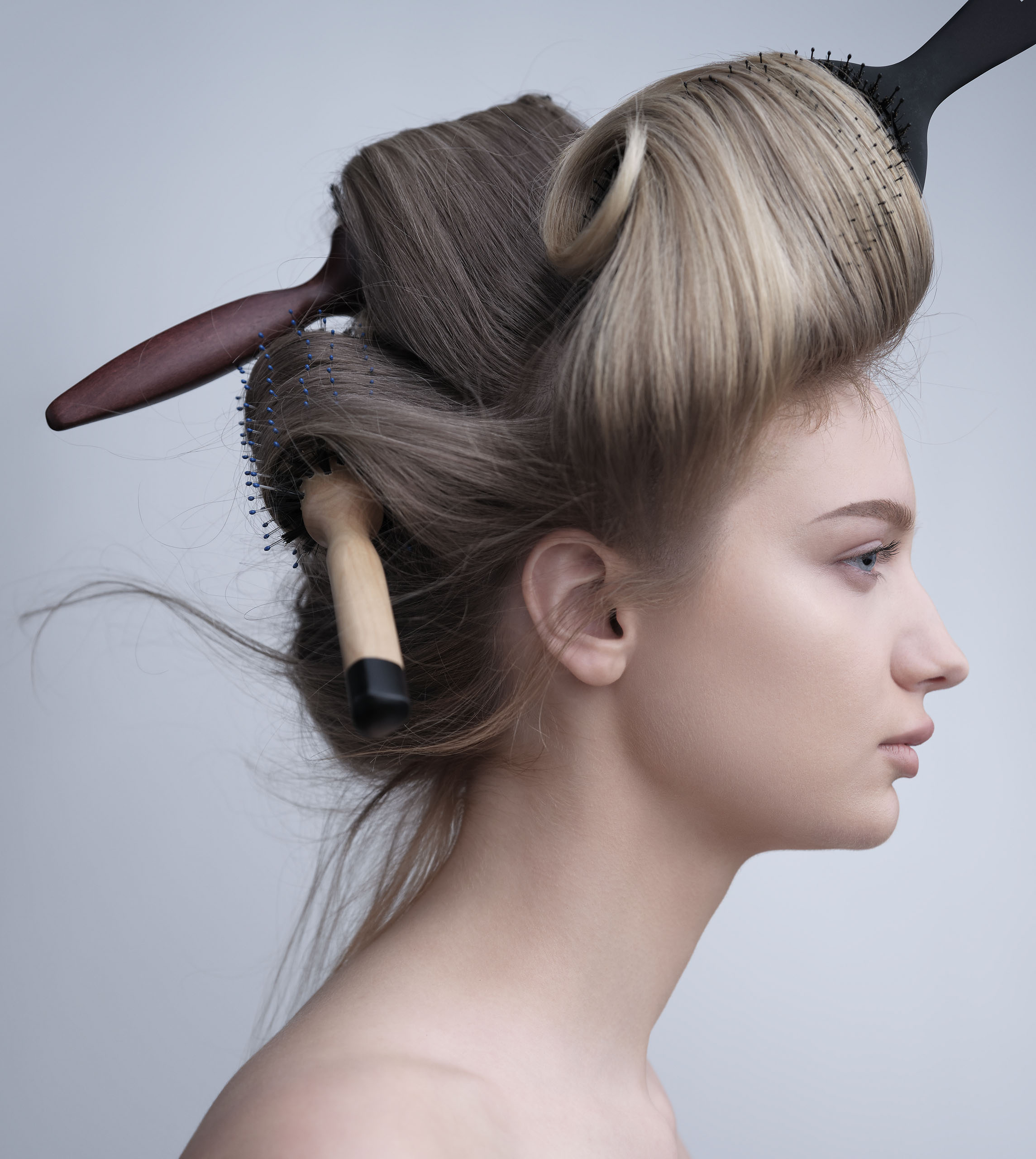When William Kent founded Kent Hairbrushes in 1777, it took 12 people to handcraft a single brush. Innovation came slowly—another venerable English brand, Mason Pearson, launched the first rubber-cushioned brush in 1885. In 1898, African American women’s rights activist (and professional hairdresser) Lyda Newman invented a removable ventilation chamber to make cleaning these hair-care tools easier.
Nowadays, buying a hairbrush couldn’t be easier, but buying the right brush for your locks requires some research. “Give me the best hair products but the worst tools, and I’ll have a difficult time turning out a good-looking model,” says Toronto-based hair stylist and makeup artist Feisel Qureshi. “Give me the crappiest products but the best tools, and I can make bad hair look good all day.” After more than 30 years in the business, Qureshi, founder of Canada-based Raincry hairbrushes, believes that good, healthy hair—textured or fine, short or long—relies on your brush.
From those designed solely for use in the shower to antistatic options, there are enough specialized brushes to confuse even the most seasoned stylist. However, the two universal implements standard in every tool kit are a flat paddle brush and a round or thermal brush. Paddle brushes tend to come with cushion bases and are the best all-round detangling, smoothing, and conditioning tools; they’re effective on all types of hair but especially for blow-drying long hair as strands dry faster when spread across the bristles on the brush’s wide base. Round and thermal brushes are designed for creating volume, waves, and curls.
Because brushes don’t come with instructions, it’s key to understand how they work for ease of styling and also for your hair’s health. “Choosing the right hairbrush is similar to choosing the right skin-care or make-up product,” says Autumne West, national beauty director at Nordstrom, who oversees the store’s brush inventory. While everyone has their own styling routine, “detangling is an important first step,” she advises.
To detangle, paddle or flat brushes with nylon bristles or metal prongs work best when knots are gently brushed from the bottom up to avoid breakage. Smoothing is done with the same brush, keeping strays flat by brushing from the top of the crown down. Round brushes create volume and perform well with fine, shorter hair. Round brushes with a heat-conducting ceramic or metal centre barrel are called thermal brushes and create waves and curls when hair is blow-dried. But with all styles, it’s the brush’s bristle that separates the wheat from the chaff or, in this case, the strand from the scalp.
Synthetic bristles can cause hair to snag and break, and cheap filaments aren’t engineered to distribute oil. Boar bristles—the ne plus ultra of brush bristles since William Kent’s day—do that naturally. “Boar bristle is the only filament in the world that effectively distributes oil from your scalp to the rest of the hair shaft for natural conditioning,” explains Graham Kenny, director at International Beauty, which distributes a variety of brushes to the Canadian market. It was Raincry’s handcrafted brushes featuring first-cut boar hair from the root (not the cheaper and less-effective midshaft or ends) that attracted him. “Turns out, your grandmother’s advice to brush your hair 100 times a night wasn’t just for vanity’s sake,” Kenny says, adding that boar bristle brushes were a natural way to get healthy, shinier hair.
But for more specialized blow-dryer applications, modern science does come into play. Raincry’s handmade thermal brush features a made-in-Italy proprietary magnesium-alloy composition that both heats and cools quickly. “Just like a shirt that you launder less, hair that undergoes less heat damage or stress damage lasts longer too, Kenny says. It also means hairstyles hold longer.
More elaborate styles, including those utilizing hairpieces and wigs, also benefit from top-drawer brushes. When French fashion house Balmain decided to get into hairpieces in 1974 (in the 1960s and ’70s, haute couture houses such as Dior had their own wig lines) it forged a partnership with wig-maker extraordinaire Dick Guliker. Guliker’s son, Richard, is now art director of Balmain Paris Hair Couture—where handcrafting hairbrushes capable of creating (and holding) runway looks is imperative.
While a properly made brush may seem like a luxury, over time it will turn out to be the cheapest staple in your grooming routine—and possibly the most sustainable. With over 90 per cent of the world’s hairbrushes made in China, each one lasts, on average, a year and then ends up in the landfill. By contrast, an heirloom object that employs both centuries-old know-how and state-of-the-art science will leave your hair feeling strong, healthy, and looking its absolute best.
Hair: tania becker using oribe. Makeup: paula lanzador. Model: madelyn kappers for lizbell agency. Digital tech: rob seebacher. Photo assistant: sean ponsford. Photographed at the warehouse studio. Black brush is balmain, brown brush is raincry, natural-wood brush is sisley paris. Read more from the Winter 2021 issue.









